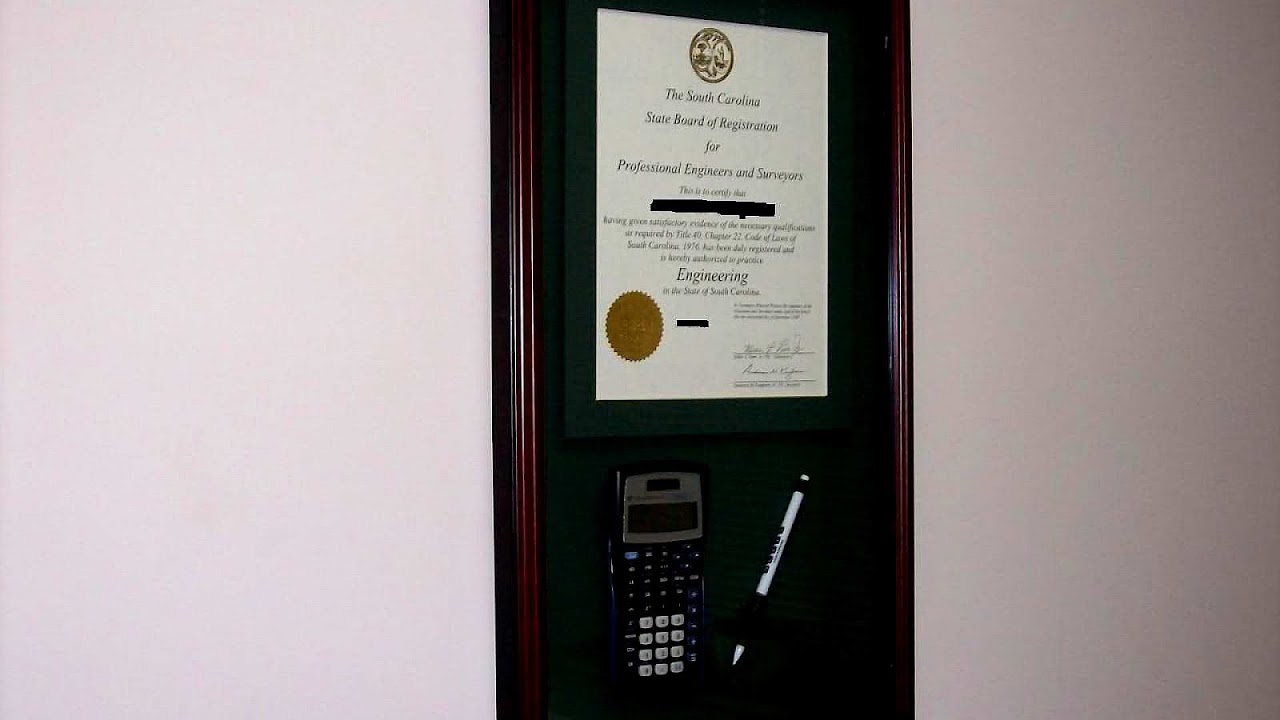
The Fundamentals of Engineering (FE) exam, also referred to as the Engineer in Training (EIT) exam, and formerly in some states as the Engineering Intern (EI) exam, is the first of two examinations that engineers must pass in order to be licensed as a Professional Engineer in the United States. The exam is open to anyone with a degree in engineering or a related field, or currently enrolled in the last year of an ABET-accredited engineering degree program. Some state licensure boards permit students to take it prior to their final year, and numerous states allow those who have never attended an approved program to take the exam if they have a state-determined number of years of work experience in engineering. A selection of states allow those with ABET-accredited "Engineering Technology" or "TAC" degrees to take the examination. The state of Michigan has no admission pre-requisites for the FE. The exam is administered by the National Council of Examiners for Engineering and Surveying (NCEES)

Maps, Directions, and Place Reviews
Structure
As of 2014, the FE and FS exams are offered only via Computer Based Testing (CBT). The exam is now given over a total of 5 hours and 20 minutes, has 110 questions, is divided differently, etc. The subjects of the different exams are chemical, civil, electrical and computer, environmental, industrial, and mechanical.
Prior to 2014, the exam was divided into two 4-hour sessions with a lunch break in between. The morning session consisted of 120 questions in a range of scientific/engineering subjects and had to be taken by all examinees, while the afternoon session consisted of 60 questions and could be taken either in a specific discipline or as a general engineering test. In 2015, content changes in the exam were instituted to make it entirely discipline-specific, with a plan of weaving general engineering subject matter (e.g. math and science fundamentals) throughout the exam. Less of the "full breadth" of most traditional engineering undergraduate curricula will be captured with this approach - such as the broad math and science foundation spanning chemistry, physics, mechanics (i.e. statics and dynamics), materials science, computer science, electronics/circuits, engineering design, and the standard range of engineering mathematics (i.e. calculus, differential equations, statistics). A concern was that, while most undergraduate engineering students are in fact exposed to most of these subjects, they may not necessarily take courses in specialized topics such as thermodynamics and fluid mechanics.
A scaled score of 70 is required to pass the exam. This does not mean one needs to answer 70% of the answers correctly to pass, however. A portion of previous exam questions are then given on subsequent exams. After the exam, a statistical analysis of these questions is used to equate the new test to the benchmark test. This makes all of the tests more or less equal in difficulty.
Those who pass the exam are sometimes designated Engineer In Training or Engineer Intern, depending on their state's licensure board's approach to recognizing those who are partway through the licensure process. After obtaining a given amount of work experience (the length of which is set by state law and may be based on the type of degree received), an EIT/EI may qualify to take the Professional Engineer (PE) exam. Actual licensure can then be applied for and awarded upon successful completion of the PE exam. The standard time of work experience (which may need to be under a Professional Engineer) is four years in most US states, for graduates of an ABET-accredited engineering program.
Professional Engineer Exam California Video
Taking the exam
Writing tools and scratch paper may not be brought to the testing site. Mechanical pencils are issued to all examinees, and the test booklet may be used as scratch paper for working problems. No calculators are allowed except for those specifically approved by NCEES and listed below; these models have no programming or communications capabilities which could allow people to cheat. The only reference material that may be used is a handbook which is issued to examinees in the morning; it must be left in the room after each session. For study purposes, this handbook may be obtained by downloading from the NCEES website or by purchasing a hard copy. However, examinees may not bring their own copies to the test site; they must use the ones issued to them by the proctors and may not write in them.
Calculator policy
NCEES allows only the following calculators to be used on the Fundamentals of Engineering Exam:
- Casio fx-115 and fx-991 (all models)
- Hewlett-Packard HP 33s and HP 35s
- Texas Instruments TI-30X and TI-36X (all models)
The calculator must clearly display its model number so that exam proctors can quickly identify the calculator and approve for use during the exam. The list of allowed calculators is revised each November. It is crucial that any examinee check the NCEES website to verify their calculator is acceptable. Absolutely no other calculators are allowed. Using a non-permitted calculator after the exam has begun will result in the examinee having his or her exam confiscated immediately and the exam not being scored.

U.S. Patent Office
Passage of the Fundamentals of Engineering Exam, coupled with graduation with any bachelor's degree or equivalent experience, satisfies the U.S. Patent and Trademark Office's technical requirements for sitting for its registration examination to become either a registered patent attorney or patent agent. This is specified in "Category C" on page 8 of the General Requirements Bulletin.
Source of the article : Wikipedia


EmoticonEmoticon